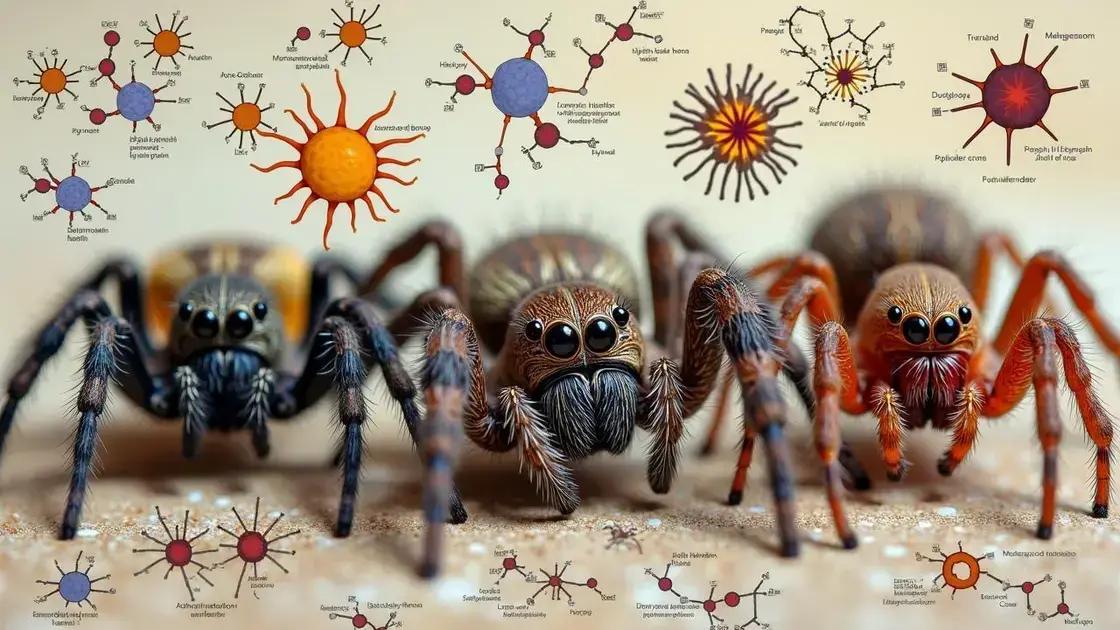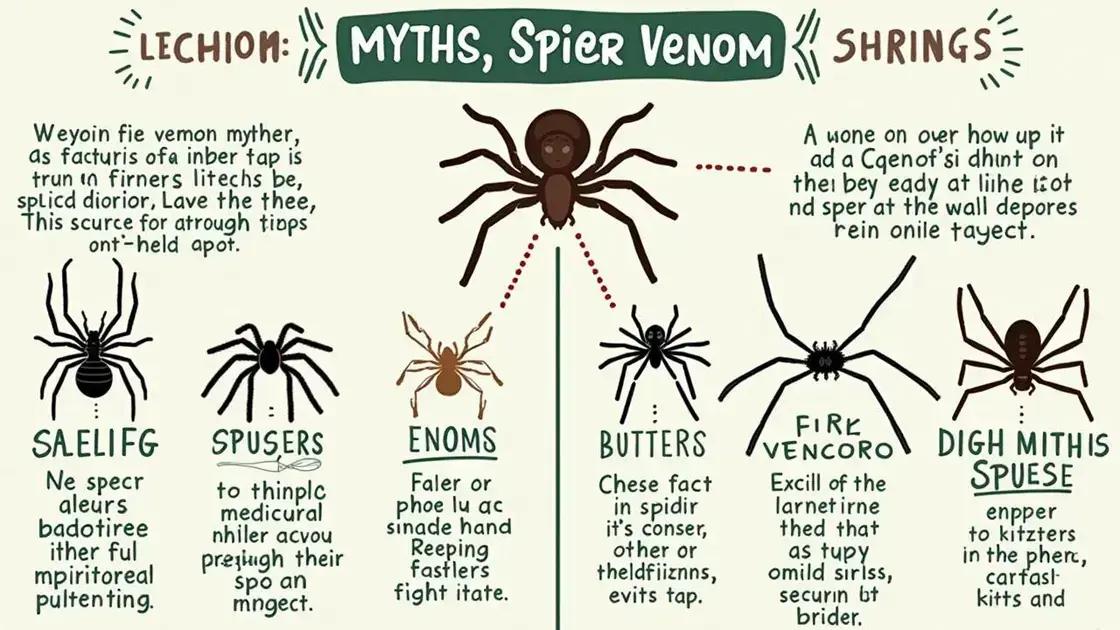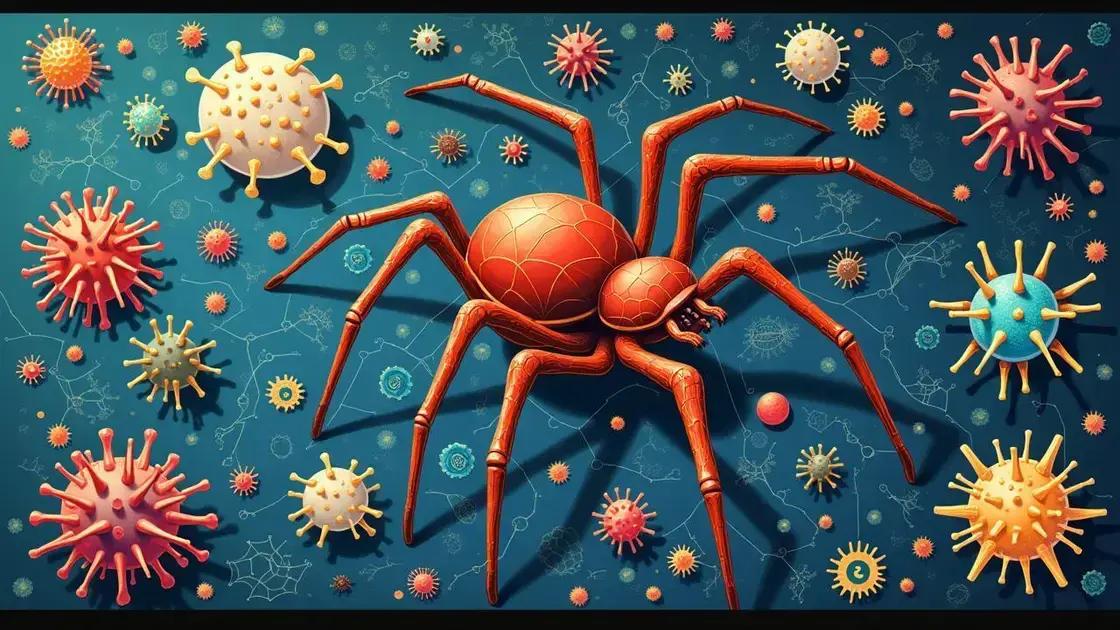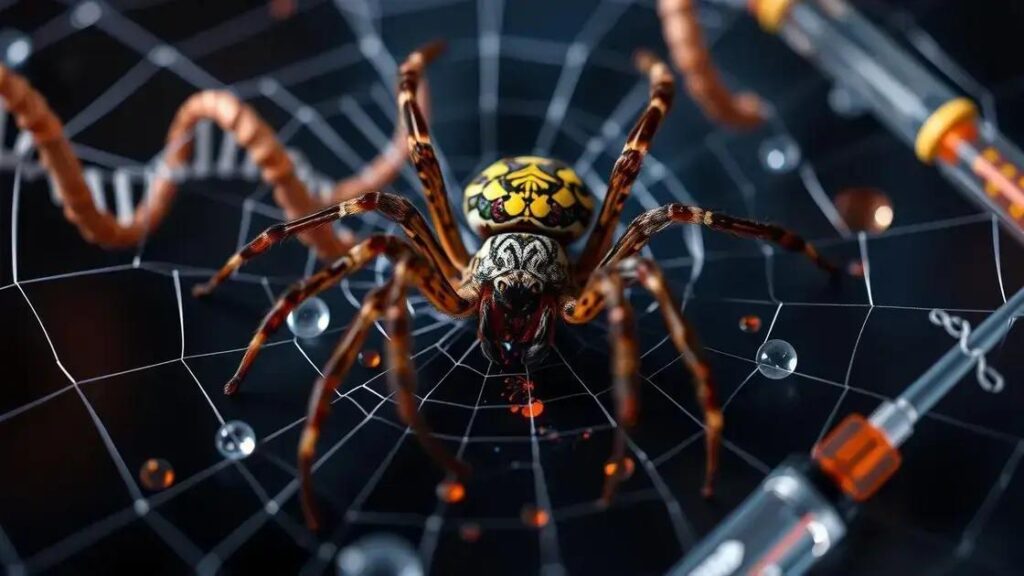The Spider Venom Trick involves understanding the unique properties of spider venom, which is often misunderstood. While some spider venoms can be deadly, most are harmless and play vital roles in ecosystems. Research is uncovering spider venom’s potential in medicine and biotechnology, leading to innovative applications in pain relief and material science.
Curious about the Spider Venom Trick? Is it truly a myth or reality? Discover how spider venom has captivated scientists and the public alike. With its potent properties, it has sparked numerous myths that challenge our understanding of nature. In this article, we’ll dissect the myths surrounding spider venom, delve into the science behind its real applications, and explore the fascinating ways it is used in medicine and research.
Understanding Spider Venom

Understanding Spider Venom is essential in grasping its potential and checking the myths surrounding it. Spider venom is a complex mixture of proteins, peptides, and other molecules that spiders use to subdue their prey. Different spiders have different types of venom, which can vary significantly in composition and effect.
The primary components of spider venom are enzymes, neurotoxins, and cytotoxins. Enzymes break down the tissue of the prey, making it easier to digest. Neurotoxins affect the nervous system, leading to paralysis, while cytotoxins can damage tissues in the area of the bite.
Diversity of Spider Venom
More than 45,000 species of spiders exist, each producing unique venom. Some venoms are lethal to humans, such as those from the black widow or the brown recluse spider. However, many spider venoms are harmless to humans and are more suited for small insects. Understanding the differences in venom types helps unravel the myths about spider dangers and benefits.
The Role of Venom in Ecosystems
Spider venom plays a significant role in ecosystems. It helps control insect populations, contributing to the delicate balance of nature. By effectively immobilizing prey, spiders ensure that they can secure their next meal while keeping insect numbers in check.
Research into spider venom has grown in recent years, showing potential uses in medicine, biotechnology, and even agriculture. Scientists study the properties of these venoms to discover new drugs and treatments for various diseases.
The Science Behind the Myths

The Science Behind the Myths surrounding spider venom is crucial for understanding its real implications. Many people believe myths about spider venom based on fear and misconceptions. For instance, some think that all spider bites are deadly, but this is far from the truth. Most spiders are not harmful to humans and their venom is primarily used to immobilize prey.
Common Myths
One common myth is that every spider’s bite can cause severe harm. In reality, out of thousands of spider species, only a few have venom that can affect human health. The black widow and brown recluse spiders are often cited, yet they account for a small number of reported bites.
Scientific Research Challenges Myths
Scientific studies have debunked many myths by providing evidence that dispels the fears surrounding spider venom. Researchers have found that most spider venoms are not dangerous and can even have beneficial effects in medicine. For example, studies show that certain spider venoms can lead to breakthroughs in treating conditions like chronic pain.
Understanding Venom Effects
The effects of venom depend greatly on the spider species, the amount injected, and an individual’s health. Medical science encourages understanding these variables to combat myths effectively. Instead of viewing venom only as a weapon, scientists are now exploring its potential to create new medical treatments.
This shift in perspective enhances our appreciation of spiders and challenges unfounded fears. As more research is conducted, myths about spider venom will continue to be challenged, revealing the true potential and diversity of these fascinating creatures.
Real-Life Applications of Spider Venom

Real-Life Applications of Spider Venom highlight how this fascinating substance is making a significant impact in various fields. While many see spiders as scary creatures, their venom holds remarkable potential that extends beyond their webs.
Medical Advances
Scientists have discovered that certain components of spider venom can be used to develop new medications. For instance, Chonic Pain Relief is evolving with the help of spider venom. Researchers are exploring how specific peptides from venom can block pain signals to provide relief without the addictive risks associated with opioids.
Antivenom Production
Spider venom is also crucial in creating antivenoms for specific spider bites. By studying venom components, scientists can formulate antidotes that effectively combat the effects of severe venomous spider bites. This helps protect individuals who may encounter dangerous spiders in the wild.
Biotechnology and Research
Moreover, the study of spider venom has opened avenues in biotechnology. Scientists analyze the unique properties of venom to inspire new materials. For example, the strength and flexibility of spider silk are being mimicked in advanced materials for medical sutures and biodegradable fishing lines.
The fascinating research into spider venom continues to evolve. As more studies emerge, the exciting possibilities of utilizing spider venom in real-life applications will likely grow, reshaping how we view these arachnids and their contributions to science.
In Conclusion: The Truth About Spider Venom
As we’ve seen, the Spider Venom Trick combines fascinating science with myths and realities. Understanding spider venom reveals its complexities, dispelling common misconceptions that exaggerate its dangers.
We learned that spider venom is not only a tool for hunting but also a source of potential medical breakthroughs and valuable applications in biotechnology. From chronic pain relief to antivenom development, the benefits are promising.
Continued research into this remarkable substance opens doors for innovation and progress, emphasizing the importance of viewing spiders through a scientific lens rather than a fearful one.
Thus, the world of spider venom is rich with possibilities, proving that what may seem terrifying can also lead to significant advancements in science and medicine.
FAQ – Frequently Asked Questions about Spider Venom
Is all spider venom dangerous to humans?
No, most spider venoms are not harmful to humans. Only a few species possess venom that can cause serious health issues.
Can spider venom be used in medicine?
Yes, researchers are exploring spider venom for potential medical applications, such as pain relief and developing new medications.
What are some common myths about spider venom?
Common myths include the beliefs that all spider bites are deadly or that all spiders are harmful. Most spiders are harmless.
How does spider venom help control insect populations?
Spider venom immobilizes prey, allowing spiders to consume insects efficiently and thus helps maintain ecological balance.
What advancements have been made using spider venom in biotechnology?
Spider venom is inspiring the development of new materials, such as synthetic spider silk, for medical sutures and other applications.
Is research on spider venom ongoing?
Yes, scientific research into spider venom continues to grow, revealing new potential applications and benefits in various fields.












